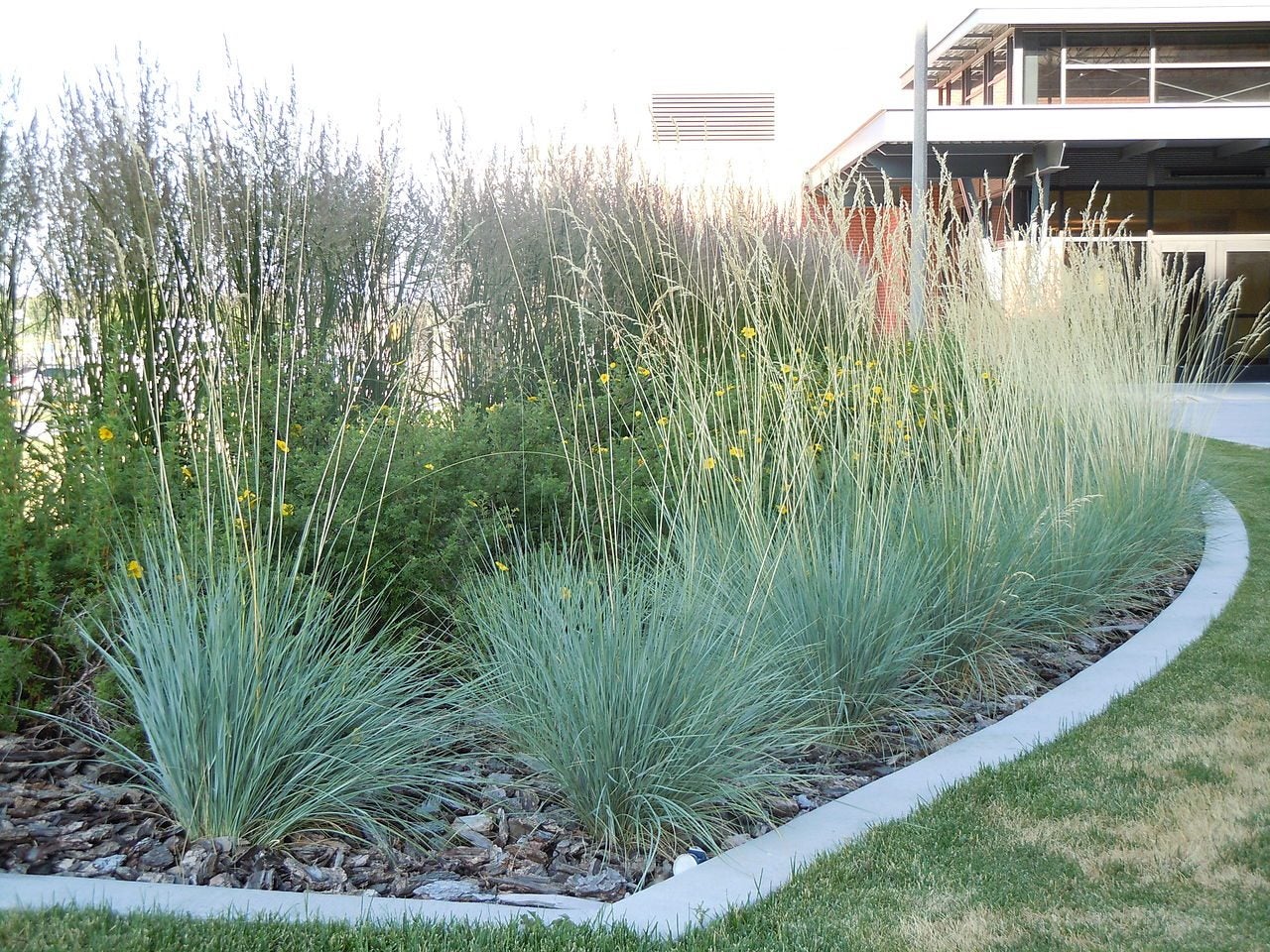Ornamental Oat Grass - How To Grow Blue Oat Grass

Grasses add drama to the garden and accentuate and complement other garden specimens. If you are looking for an attractive ornamental grass with a unique color, look no farther than ornamental blue oat grass. Read on to see how to grow this blue hued ornamental oat grass variety.
What is Blue Oat Grass?
Native to Europe, ornamental blue oat grass (Avena sempervirens syn. Helictotrichon sempervirens) is a perennial grass with a dense, clumping habit of 1 foot (31 cm.) long, stiff, blue green foliage about ½ inch (1 cm.) wide and tapering down to a point. Blue oat grass resembles blue fescue although it is larger; the plant grows 18 to 30 inches (46-75 cm.) tall. Flowers are borne from the tips of the tapered leaves tipped with golden, oat-like seed heads. Beige panicles are produced June through August, eventually achieving a light brown hue by fall. Blue oat grass maintains its attractive light brown fall color through the winter. Blue oat grass is good as an accent plant of in mass plantings. The blue/green foliage with a silvery cast is an excellent eye catcher and accents the green foliage of other plants.
How to Grow Blue Oat Grass
Ornamental blue oat grass is cool season grass. United States Department of Agriculture zones 4 to 9 are suitable for growing ornamental blue oat grass. The grass likes moist, well-drained soil in full to part shade. It prefers fertile soils but will tolerate less fertile as well as sandy and heavy clay soil. Plants are usually set 2 feet (61 cm.) apart to form a solid mass of foliage. Additional plants can be propagated by division in the spring or fall. Blue oat grass does not spread via rhizomes or stolons like other grasses, so it is a less invasive option for the landscape. New seedlings will pop up of their own accord, however, and can be removed or moved to another area of the garden.
Blue Oat Grass Care
Blue oat grass care is minimal, as it is a forgiving and hardy grass. Heavy shade and little air circulation foster foliar disease on blue oat grass but, otherwise, the plant has few problems. It does tend to get rusty looking, especially when it is overly humid and wet, usually if it is in a shaded area. No more than yearly feeding is needed to keep the plants thriving and they should last for years with very little care. Growing blue oat grass can be pruned back in the fall to remove old leaves or at any time they are looking a bit peaked and need some rejuvenation. Of ornamental oat grass varieties, A. sempervirens is the most common, but another cultivar ‘Sapphire’ or ‘Saphirsprudel’ has an even more pronounced blue hue and is more rust resistant than A. sempervirens.
Gardening tips, videos, info and more delivered right to your inbox!
Sign up for the Gardening Know How newsletter today and receive a free copy of our e-book "How to Grow Delicious Tomatoes".

Amy Grant has been gardening for 30 years and writing for 15. A professional chef and caterer, Amy's area of expertise is culinary gardening.
-
 4 Superfast Composting Methods: Turn Waste Into Garden Gold In 30 Days Or Less
4 Superfast Composting Methods: Turn Waste Into Garden Gold In 30 Days Or LessTry the fastest composting methods to turbocharge your pile and transform kitchen scraps and garden waste into finished compost in just a few weeks.
By Mary Ellen Ellis
-
 Best Spider Plant Soil – Complete Soil Guide And Expert Tips For Keeping Plants Happy
Best Spider Plant Soil – Complete Soil Guide And Expert Tips For Keeping Plants HappySpider plants are fun and easy plants to grow, but what is the best soil for a spider plant? Selecting the right soil is important so they can thrive.
By Bonnie L. Grant